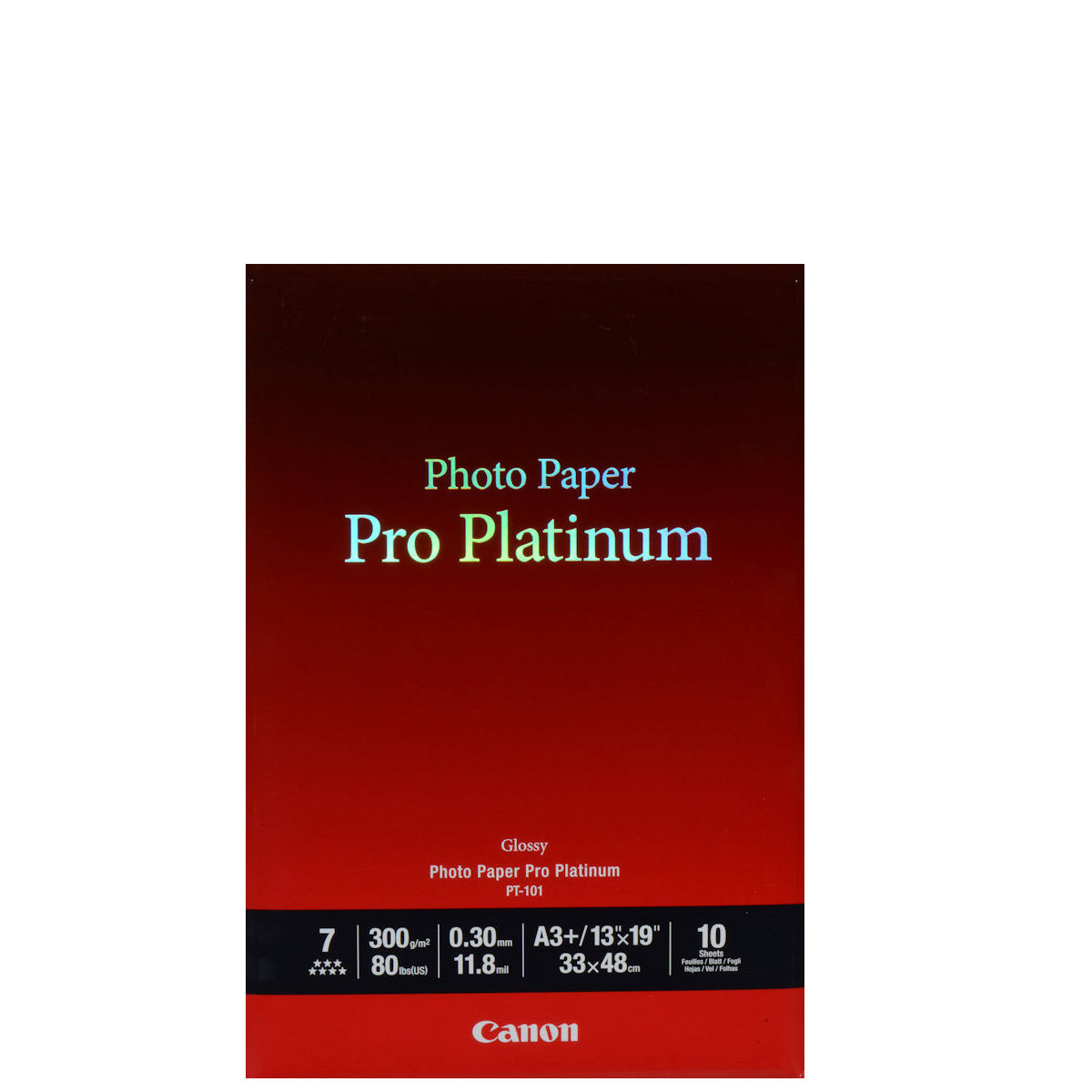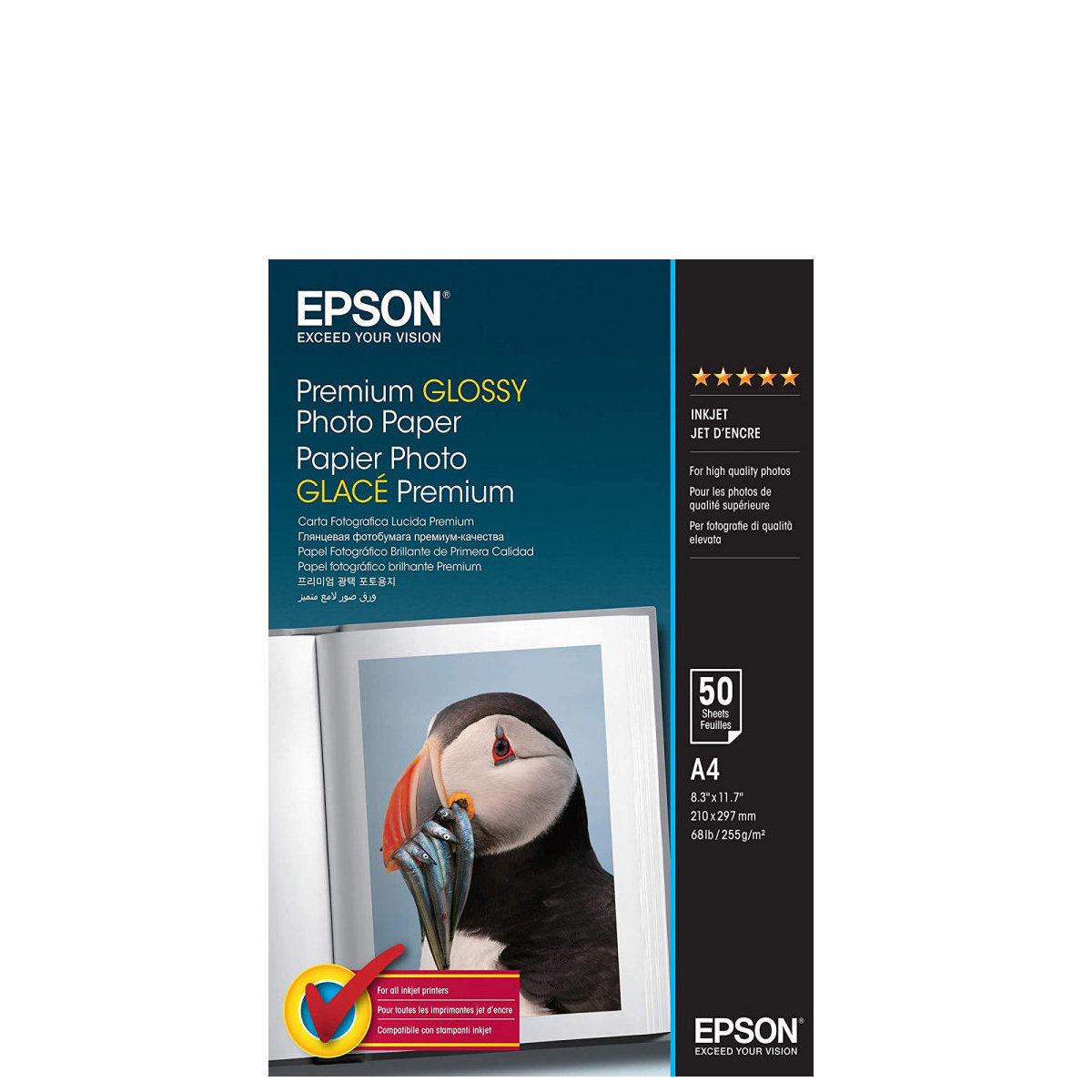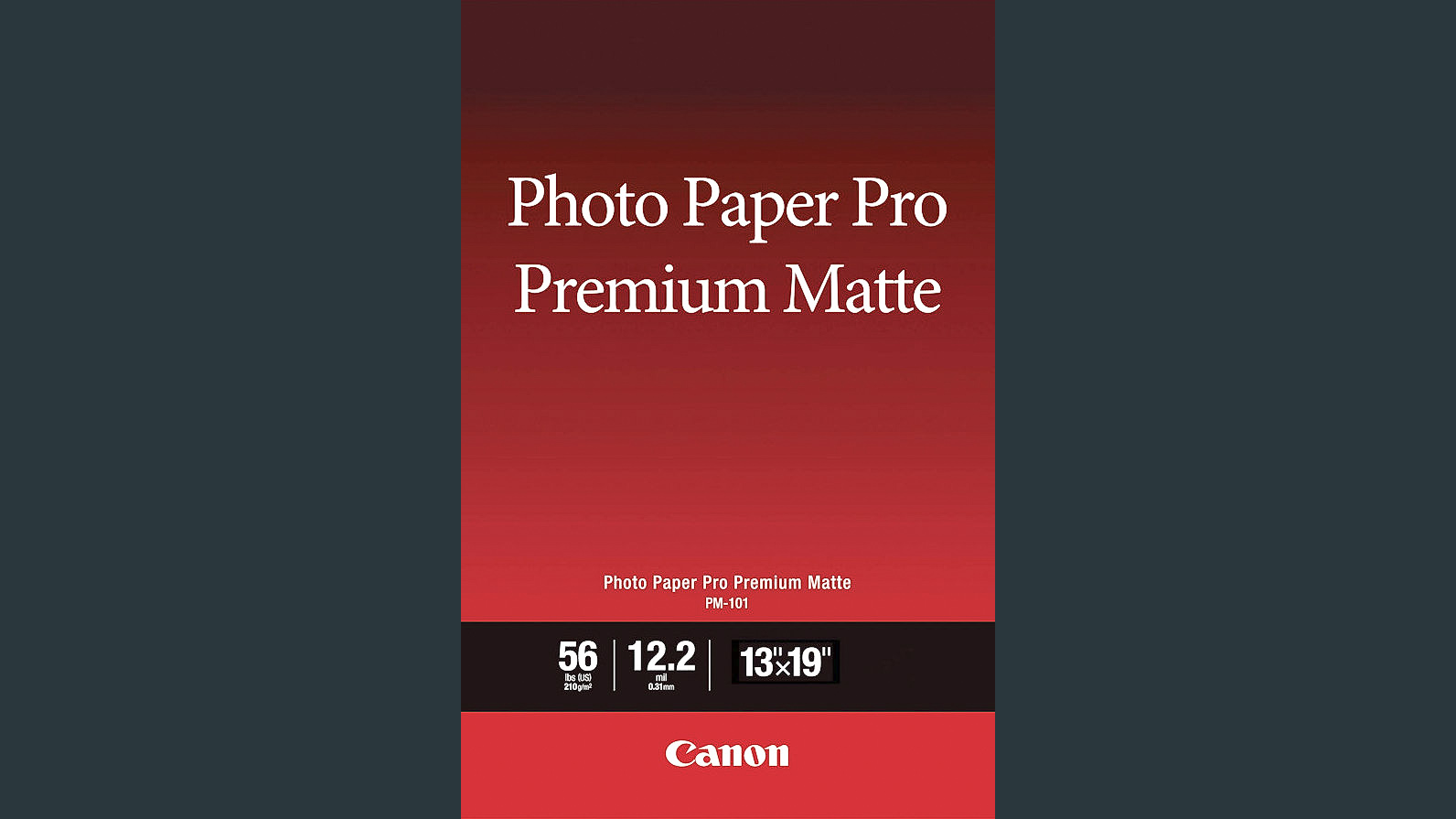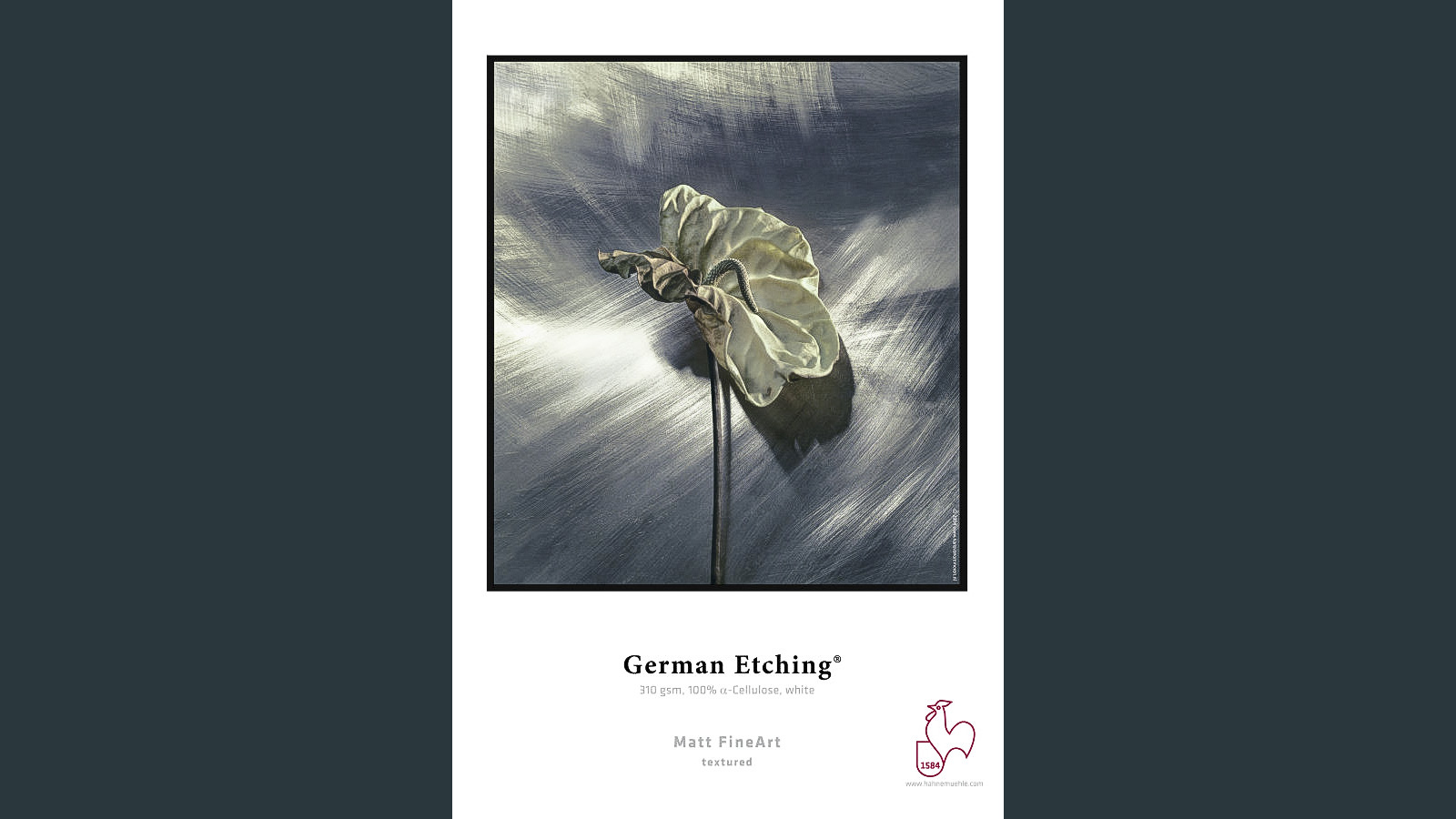The best photo paper for inkjet printers: look good on paper
The best photo papers will breathe life into your images and make them look their best. Here are my top picks from Canon, Epson, Hahnemühle and Canson

For printing photos at home, you need the best photo paper you can buy. No matter whether you're intending to exhibit your images, want to display them in a portfolio, or just want to store them to look back on in the future, the best photo paper will provide you with the essential media on which to do so.
When teamed with best photo printer, you'll be giving your photographs the quality look that they deserve, often at a cost that's not much more than using cheap papers. If you've ever tried printing photos on standard paper stocks, you probably already know that it doesn't exactly produce winning results. With proper, dedicated photo paper and the best printer ink, it's a different story.
Below, I've brought together the best photo paper from my favorite manufacturers. I've included paper of all types, including glossy, matte and lustre. If you're not sure on the terminology, scroll to the bottom where I've included a section on how to choose photo paper, as well as answers to common FAQs.

Matthew Richards is a photographer and journalist who has spent years using and reviewing all manner of photo gear. He is Digital Camera World's principal lens reviewer – and is also an encyclopedia when it comes to all manner of cameras, flashguns, tripods, printers, papers, inks, and just about anything imaging-related.
The Quick List

A cut above most glossy papers, this is my absolute favorite from Canon and it's reasonably priced.
Read more below

A particularly lustrous luster paper, this is great for minimizing reflections under harsh lighting conditions.
Read more below

The perfect photo paper for use with pigment ink printers, for results that look great and last a lifetime.
Read more below

Great quality and very good value, with a superb high-gloss finish, although it feels a little on the thin side.
Read more below

It enables deep blacks and excellent color saturation, while also being impressively resistant to glare.
Read more below

Glossy finish meets fine-art media in this classic Baryta paper from Hahnemühle. Pricey but worth it.
Read more below
Load the next products...

For beautiful-quality matte paper, you can't go wrong with Hahnemühle German Etching and its wonderful texture.
Read more below

For ultra-high quality prints, Canson's Infinity ARCHES 88 paper delivers the kind of superb quality you need.
Read more below

A fabulous matte paper that's available in different densities as well as in double-sided and roll options.
Read more below

Premium materials include pure cotton for the base of this paper and microporous top layer for a gorgeous luster finish.
Read more below
Best photo paper for inkjet printers
Why you can trust Digital Camera World
Canon photo papers
Though best known for its class-leading mirrorless and DSLR cameras, Canon also produces excellent photo paper in a variety of configurations. If you already have a Canon-made printer, buying Canon photo paper can be a good idea — here is a selection of my favorite Canon photo papers.
1. Canon Photo Paper Pro Platinum PT-101
Specifications
Reasons to buy
Reasons to avoid
For those printing with a typical 5-ink PIXMA multi-function document/photo printer, Canon’s Photo Paper Plus Glossy II PP-201 is the most sensible choice for performance and value for money. It’s a reasonably weighty 265gsm glossy photo paper with an attractive high-gloss finish.
For the best results, however, especially if you’re using a more exotic printer, Pro Platinum is the better option. It’s a fair bit pricier but is superior in quality and weight, at 300gsm. As Canon’s range-topping glossy paper, it has excellent brightness, enables sumptuous color rendition and is very resistant to fading.
2. Canon Photo Paper Pro Luster LU-101
Specifications
Reasons to buy
Reasons to avoid
The debate over whether glossy or luster finish is best has been going on since the days when we used to have our rolls of 35mm film processed on the high street. Luster isn’t as full-on shiny as glossy paper but it has advantages in reducing glare from strong light sources bouncing off the surface, and is preferable for handling if you’re passing prints around, as it’s more resistant to fingerprints.
Canon’s Photo Paper Pro Luster is an upmarket paper with an attractive look and feel, that delivers excellent results. Like other Canon ‘Pro’ papers, it’s priced accordingly and, if you’re happy to settle for a little less, check out Canon’s Photo Paper Plus Semi-gloss SG-201, which has a pleasant satin finish.
3. Canon Photo Paper Pro Premium Matte PM-101
Specifications
Reasons to buy
Reasons to avoid
Available in a wide range of sizes up to A2/17x22-inch, this is Canon’s best matte photo paper. Unlike glossy, semi-gloss and lustre, there’s no reflection from the surface. Deep colors and rich blacks can look really dramatic. It works just fine with Canon’s dye-based printers up to and including the PIXMA PRO-200, and is even better with pigment-based printers like the imagePROGRAF PRO-300 and PRO-1000, which feature matte black inks.
For use on more mainstream PIXMA multi-function document/photo printers, MP-101 Matte Photo Paper works well and is much cheaper to buy. It’s also lighter in weight, making it easier to use for creative projects and creating greetings cards. With this in mind, there’s also a double-sided MP-101D version.
Epson photo papers
Epson offers a huge range of photo papers, to the point where all the options can be a little overwhelming at times. Still, the name has become synonymous with reliable quality in photo printing, and you're unlikely to wrong with Epson photo paper. Here are some stocks that we particularly rate.
4. Epson Premium Photo Paper Glossy
Specifications
Reasons to buy
Reasons to avoid
Like Canon, Epson offers a wide range of glossy papers to suit different needs and budgets. Going up through the price range, there’s Epson Value Glossy, Epson Photo Paper Glossy, Epson Premium Photo Paper Glossy and Epson Ultra Photo Paper Glossy. For performance and price, the Premium Glossy paper gives the best mix of standout performance, with Epson’s six-ink dye-based photo inkjet printers, without spending over the odds.
Color rendition is excellent and the high-gloss surface is superb. It’s only really worth trading up to the range-topping Ultra Glossy paper if you want the heavier 300gsm paper weight, compared with the Premium paper’s 265gsm. Another advantage of the Premium paper is that it’s available in a number of roll options, ideal for use with Epson’s larger-format printers that have built-in or optional roll feeders.
5. Epson Premium Photo Paper Semi-Gloss
Specifications
Reasons to buy
Reasons to avoid
Fully glossy paper can hang awkwardly on the wall, diminishing the image if strong light sources are bouncing back off its surface. Luster papers are often preferred but not everyone likes a textured finish.
This semi-gloss premium photo paper strikes a good balance with a glare-resistant but ‘cockle-free’ finish that makes it highly suitable for exhibition-grade printing. It enables excellent resolution for retention of ultra-fine detail, along with rich color saturation and deep blacks.
The paper performs equally well with Epson’s dye-based printers and its more pro-grade pigment-based photo printers like the SureColor P700 and P900, although slight bronzing can be apparent with pigment inks. A variety of cut-sheet sizes is available, as well as various roll options.
Hahnemühle papers
Hahnemühle is a name with rich heritage in photo paper and indeed all other types of paper, dating back centuries. There are plenty of professional photographers out there who insist on printing on nothing but Hahnemühle paper, and once again there is an enormous amount of choice available.
6. Hahnemühle Photo Rag Baryta
Specifications
Reasons to buy
Reasons to avoid
Hahnemühle has a history of top-quality papermaking that goes back to 1584, based at the same site in Germany throughout, to make use of its top-quality and entirely consistent natural water supply. Photo Rag Baryta is one of the company’s best-selling photo papers, from its Digital FineArt Glossy line-up.
There’s a truly vast range of Hahnemühle FineArt media to choose from and the Glossy section itself is very extensive, including metallic, pearl and satin options. The Photo Rag Baryta is based purely on cotton fibres and has a lovely natural whiteness. The smooth, glossy inkjet coating enables very vibrant color rendition along with superb sharpness and really deep blacks, ideal for really punchy results.
7. Hahnemühle German Etching
Specifications
Reasons to buy
Reasons to avoid
Hahnemühle’s Digital FineArt media is split into various categories that include matte smooth, matte textured, glossy and canvas. German Etching is a great all-rounder from the matte textured range. It’s genuine mould-made paper, based on a traditional and now very rare process, giving it a lovely tactile feel, along with a unique surface texture with a felt structure that generates a truly three-dimensional effect for photo prints.
Its 310gsm density also gives it a really substantial, top-quality look and feel. Vivid color and really deep blacks are assured by the premium matte inkjet coating.
Canson papers
Another name that carries a lot of weight and heritage in the photo paper world, Canson is practically synonymous with high-end printing media. Its matte papers are particularly highly desired, with excellent archival qualities that should see them stand the test of time. If you want a long-lasting print, Canson is a great choice.
8. Canson Infinity ARCHES 88
Specifications
Reasons to buy
Reasons to avoid
Canson has long been renowned as a maker of top-quality fine art papers. More recently, it’s gained added prestige with the acquisition of ARCHES, a master papermaker since 1492 and the only paper mill in France using a traditional cylinder mould process for all of its papers.
Current choices in the Canson Infinity ARCHES line-up include 88, BFK Rives Pure White, BFK Rives White and Aquarelle Rag. The 88 is made entirely from cotton fibres and has an ultra-smooth matte finish.
As with all of the other fine art papers in our guide, it’s completely free of any optical brighteners and has excellent archival qualities. Photo print quality is similarly top-drawer, with natural whites, rich blacks and superb tonal range.
9. Canson Infinity Rag Photographique 310gsm
Specifications
Reasons to buy
Reasons to avoid
Many photographers favor matte paper for printing and Rag Photographique from the Canson Infinity line-up is one of the best. It’s available in two different densities, in both cut sheet and roll options, and there’s also a double-sided ‘Duo’ version.
It’s created from cotton fibers but includes additional natural minerals to enable an exceptionally smooth white tone. It’s also particularly long-lasting, having been developed to satisfy museum requirements as well as catering to the digital fine art market in general. The paper is wonderfully smooth to the touch and delivers superb photo print quality with particularly deep blacks.
10. Canson Infinity Platine Fibre Rag 310gsm
Specifications
Reasons to buy
Reasons to avoid
The base material for this lustre photo paper is made purely from cotton fibers, but it also has a microporous top layer coating to give it a lustre finish. As such, it’s based on a paper that was a favourite for many years in the original Platinum/Platine traditional photographic market for conventional darkroom printing.
The ‘digital darkroom’ Platine Fibre Rag has the same look and feel as its conventional forebear, the F-Type Baryta Fibre paper. Excellent for both color and black and white photo printing, it has a superb tonal range from really deep blacks to bright whites.
How to choose the best photo paper
Photo papers fall into two main categories. The first includes glossy, semi-gloss and lustre (or luster) papers, which have a protective, shiny top layer. These are most ideal for use with photo printers like the Canon PIXMA PRO-200 and even general home printers, which use dye-based inks to generate photo output. The water-based ink is fully absorbed beneath the top layer, enabling excellent uniformity with an entirely smooth finish.
The second category is matte photo papers.With matte photo papers, the ink is laid on the top-layer inkjet coating, rather than being absorbed beneath it. These are better suited to printers such as the Canon imagePROGRAF PRO-300 and Epson SureColor P700 and SureColor P900, which use pigment-based inks.
Unlike dye-based inks, the pigments in these inks is suspended in the liquid rather than being dissolved. The larger molecules of the pigments are more robust and better suited to matte paper.
They’re also suitable for printing on glossy, semi-gloss and lustre photo papers but less ideal than dye-based inks. That’s because the pigments generally won’t be fully absorbed beneath the outer layer, which can give rise to ‘bronzing’, where the print looks blank and lifeless when viewed from certain angles. Gloss differential can also be a problem, where areas of the print with a denser covering of ink look less glossy than areas with a relatively light covering.
Glossy papers work well with photographs with deep, rich colors, while matte paper is usually more suitable for black and white photos. However, note that glossy papers attract fingerprints more easily, and suffer more from glare in direct sunlight or bright lighting.
How we test photo paper
At Digital Camera World, we have assembled an experienced team of photography journalists, testers and photographers who have been writing about digital imaging right from its very inception. Some of us were film camera journalists before that, and so we have plenty of experience with the more hands-on aspects of photography such as photo printing. Read more about how we test and review at Digital Camera World.
Not sure what you're looking for when it comes to finding the best photo paper? To give you a better steer, here are some answers to common questions about buying the right photo papers and inks for your photography projects.
What is photo paper?
Photo paper is, quite simply, paper that's specially designed for printing photos on. If you've ever tried to printing your photographs on normal office paper, you'll have seen that the results are quite disappointing. So whether you're using a regular office multi-function printer or a dedicated photo printer like the Epson XP-970, you will get much better results from selecting good quality photo paper.
What are the standard paper sizes?
There are a number of common paper sizes used for printing photos. Essentially there are two systems used - one that measures the dimensions in inches (particularly popular in North American), and an ISO system that uses a letter and a character (such as A4) that aims standardize international paper sizes.
Name | Millimetres | Inches |
|---|---|---|
Letter | 216 × 279 mm | 8.5 × 11 in |
Tabloid or Ledger | 279 × 432 mm | 11 × 17 in |
A2 | 420 x 594 mm | 16.5 x 23.4 in |
A3+ | 329 x 483 mm | 12.95 x 19.02 in |
A3 | 297 x 420 mm | 11.7 x 16.5 in |
A4 | 210 x 297 mm | 8.3 x 11.7 in |
A5 | 148 x 210 mm | 5.8 x 8.3 in |
What is the difference between glossy and matte photo paper?
As the name suggests, glossy photo paper has a shiny finish, while matte paper has a flat, non-reflective finish. As a general rule of thumb, glossy photo paper is better for making prints with vibrant colors and deep blacks, while matte photo paper is better for making prints with natural colors and reduced glare.
What is the difference between RC and FB photo paper?
RC (resin-coated) photo paper is made with a thin layer of plastic on both sides, which makes it water-resistant and durable. FB (fiber-based) photo paper, in contrast, is made from pure cellulose fibers, which gives it a more traditional look and feel. FB photo paper is also more archival, meaning that it will last longer without fading.
How can I make my photo prints last longer?
Your photo prints will last longer if you store them in a cool, dry place away from direct sunlight. Also avoid touching the front of the prints with your fingers, as this can cause fingerprints and smudges. You can further protect your prints by placing them in photo sleeves or frames, or a quality photo album.
Should you print your own photos or send them to a lab?
There’s also a lot to be said for creating your own prints with a high-quality photo printer instead of uploading your digital images to a lab. For one thing, you maintain control over the whole process and, with a just little learning and maybe a bit of trial and error, you should be able to get fabulous results that are exactly as you want them.
Professional photographers often feel that printing their own images enables them to show their photos in the way they want them to be seen, rather than being at the mercy of random and possibly badly adjusted monitor screens, tablets and even smartphones, owned by their clients.
Are big-brand inks and papers the best for printing photos?
Using own-brand inks and photo papers from the likes of Canon and Epson, you can be assured of photo prints that should last a lifetime without fading. The chemistry of the inks and papers are naturally formulated to work together.
ICC (International Color Consortium) profiles ensure that the right mix of inks is used to maximize color fidelity for any given own-brand paper with a particular ink set. It’s an important issue because different papers have varying whiteness and react with ink in different ways. Indeed, ultra-white papers sometimes include optical brighteners, similar to those used in laundry detergents, which react with UV light to give a super-bright appearance. The downside is that stability is less good over time, so they’re typically not used in archival and ‘fine art’ media.
Because the results are pretty much guaranteed when using own-brand inks and papers, many photographers don’t venture any further. But that’s missing a trick.
So-called ‘fine art’ media is available from printer manufacturers like Canon and Epson but also from specialist paper makers like Canson and Hahnemühle, who take papermaking to a more elevated level. Whereas standard photo papers tend to have a plasticky feel and can be somewhat lacking in character, fine art papers are often based on cotton ‘rag’ and other premium fibers, and are created to the highest standards with specialist manufacturing processes.
Some Canson and Hahnemühle’s fine art media is made on traditional mould paper machines, which are now very rare, in a process that goes back centuries and has been favored by the greatest painters down the ages. Fine art media is generally heavier than mass-produced photo paper and comes in a huge range of smooth or uniquely textured finishes that give them a much higher-quality look and feel.
As with printer manufacturers’ own-brand papers, Canson and Hahnemühle offer ICC profiles for a huge range of inkjet printers, to ensure the utmost accuracy and fidelity.
The best camera deals, reviews, product advice, and unmissable photography news, direct to your inbox!
Matthew Richards is a photographer and journalist who has spent years using and reviewing all manner of photo gear. He is Digital Camera World's principal lens reviewer – and has tested more primes and zooms than most people have had hot dinners!
His expertise with equipment doesn’t end there, though. He is also an encyclopedia when it comes to all manner of cameras, camera holsters and bags, flashguns, tripods and heads, printers, papers and inks, and just about anything imaging-related.
In an earlier life he was a broadcast engineer at the BBC, as well as a former editor of PC Guide.










